This is how local chef Ming Tan interprets dystopian hawker cuisine
A look at how we’re destroying our own favourite foods
Hands up if your first reaction to Singapore submitting hawker culture for a UNESCO bid was unflinching cynicism.
The announcement at the National Day Rally last year ruffled feathers locally and regionally. It was baffling on multiple levels: Since when did we—a young nation who’s often been accused of borrowing street food from our neighbours—have a claim to something as universal as hawker culture? And why the sudden desire to officiate it as world heritage?
If the government is feeling the heat about preserving a dying trade, it sure chose a strange way to manifest it—strange enough to prompt a new artistic collaboration in response. Commissioned by The Substation, local chef Ming Tan (of Park Bench Deli fame and now JAM at Siri House) has partnered with visual artist Debbie Ding, for a provocative food-meets-art dining experience at The Substation.
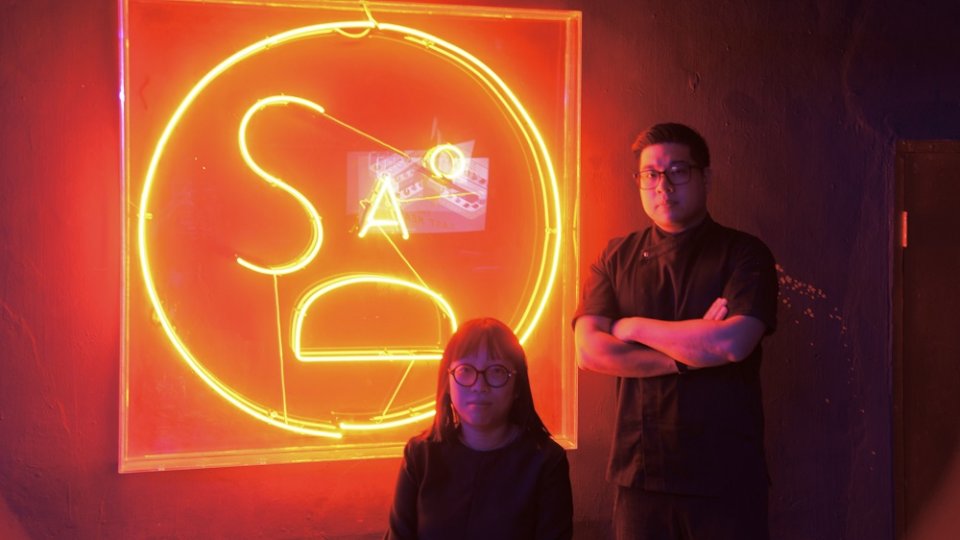
Debbie Ding and Ming Tan at the SAD (Substation After Dark) Bar
SAD: The Last Meal has nothing to do with that cliched notion of what you’d want your best last meal on earth to be. Instead, it veers in the opposite direction; the meal itself is meant to provoke, frustrate, and materialise that same anxiety hawkers today feel about their craft.
“We thought a lot about who’s eating it,” said Ding, who created foley-heavy visuals documenting the food-making process as accompaniment. “It had to be someone who’s already eaten the food before, as opposed to say, in the future, a child who’s never eaten any of this before; there’s no reference point for your feelings about the food.”
So prepare to feel things. On the food front, Tan will present a four-course menu of dystopian hawker food, complemented by a series of audio-visual videos by Ding. The two worked together to literally take apart familiar favourite hawker dishes, then render them in unfriendly forms you might find in the future: cubed chicken rice, laksa cereal, to start. As you eat the unrecognisable foods in front of you, Ding’s multi-sensorial videos of preparing the food in its “correct” way will play alongside each dish. The jarring contrast in the two experiences—physical and sensorial—is meant to pull you out of the moment.
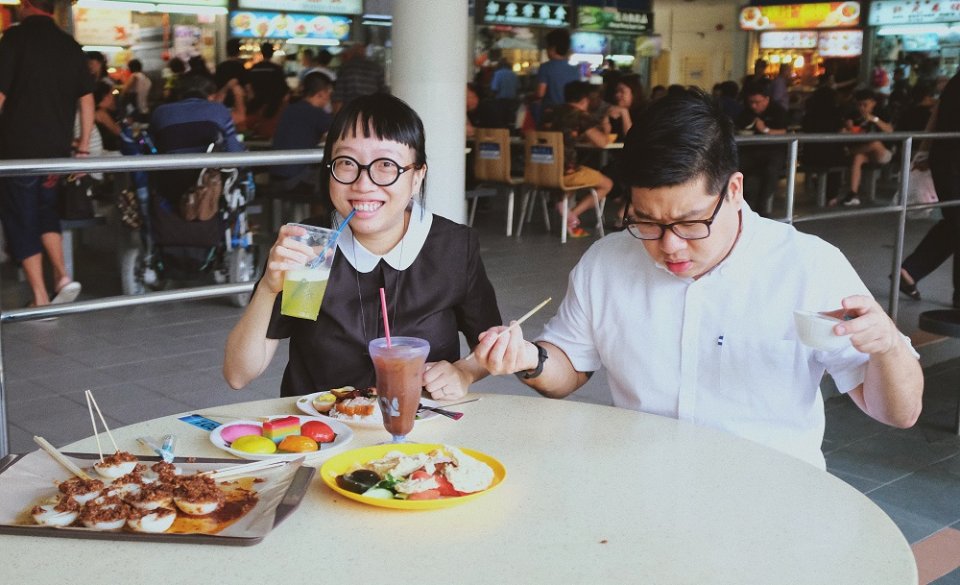
“In trying to understand where food was going and what kind of problems you’d face with hawker food in the not-so-distant future, a lot of (the work) was a study of what form hawker food takes at this point,” said Tan. “So that led me to start speaking with Debbie about what are the biggest issues facing the food industry. Everyone’s talking about it now, this UNESCO drive—there’s almost a fetishist view of our hawker culture.”
As such, the dining table comes laden with contemporary issues more unsavoury than previously thought: efficiency and manpower; safety, hygiene and traceability; nutritional content and the idea of food as medicine. We demand so much of our food today without considering the difficulties in reaching such high standards. Would we rather have a single hawker “inefficiently” churning out plate after hand-fried plate, or consume it in an unappetising, factory-produced form?
The meal, which takes place for two nights only on Mar 29 & 30, is part of a larger curated programme at The Substation investigating nostalgia and the anxieties underpinning a constantly evolving Singapore. Also included is a large-scale exhibition that takes the form of a playground—there’s the ever-recognisable Dragon Playground, but tweaked with new details that are anything but charming.
For one, the dragon is bookended by now-extinct native species like the Malayan tiger, driven to extinction due to urbanisation. The ubiquitous slides at a playground are a callback to the former notoriously unsafe Big Splash water slides at East Coast Park—a grim reminder that nostalgia can be physically dangerous. And the kampong, often romanticised in its portrayals today, gets a fixture in the playground too—along with bags of trash, to highlight the less talked-about issue of poor sanitation in those coveted “kampong days”.
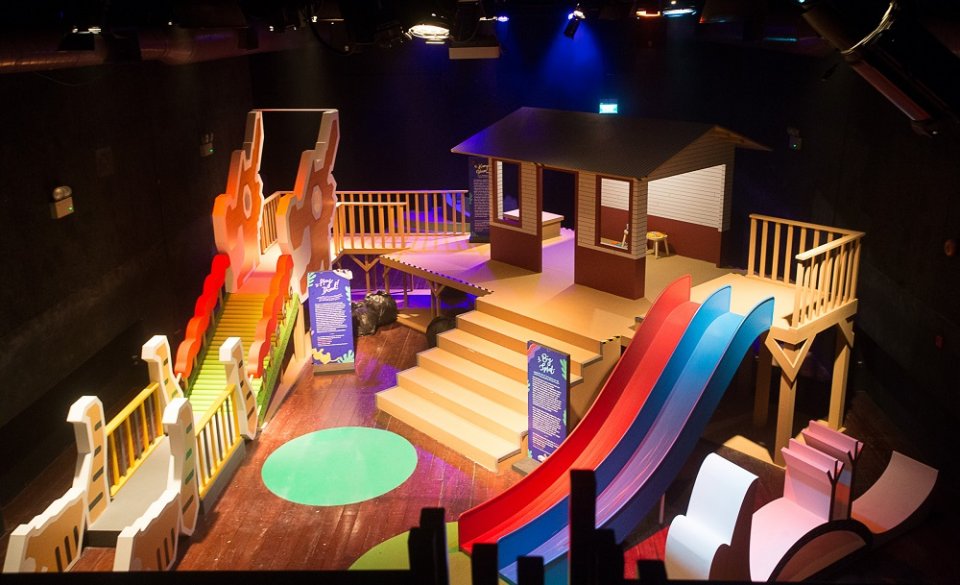
Down in the SAD Bar, we had a taste of the future ahead of the official dates; and let’s just say it isn’t entirely pretty. But that’s the point.
Addressing the grimaces around the room, Tan said: “I don’t think it’s about whether we like it or not; it’s whether it’s coming. I think there’s a high chance that various foods will take on this form— and we’ll have to be okay with it, because it’s either this or nothing.”
Our review of the future below.
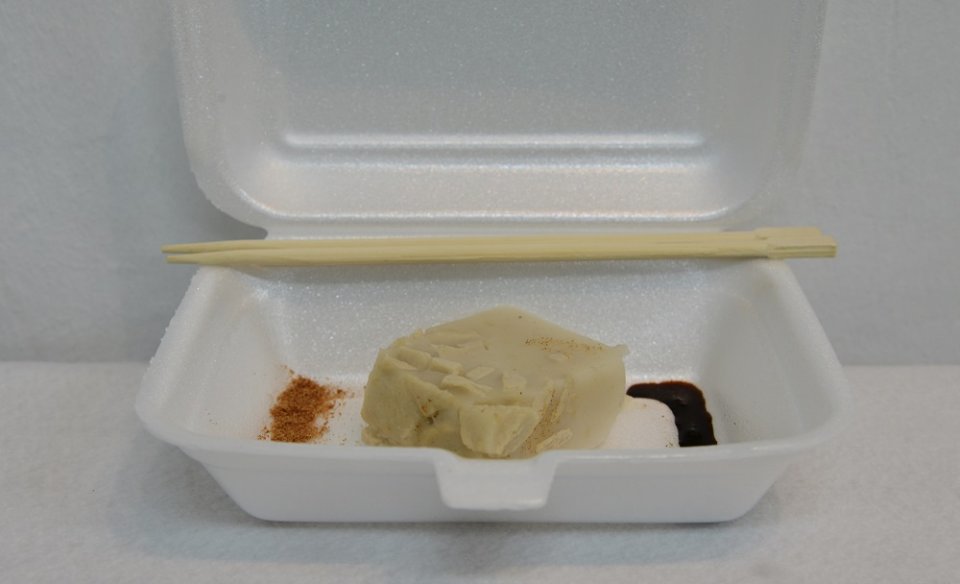
Dismembering the nation’s most iconic dish takes a certain level of skill and deviousness. Tan cooked the rice and protein together, fried it all up, and steamed it into one giant gelatinous kueh; with an accompanying black sauce gelatin on the side. You also get a sprinkling of super tart chilli powder, which he describes as “violent”. But the real kicker to the cubed creation—it’s 100 percent vegan; the “chicken” is made of a mushroom-based protein, in acknowledging today’s big push towards veganism.
Tan agrees that there is a “level of brutalism in removing all the flavour”, hence his decision to retain it after altering the dish’s form. “There’s no need to not enjoy food still in the dystopian future,” he added.
Verdict: Let’s see Impossible Foods take on that.
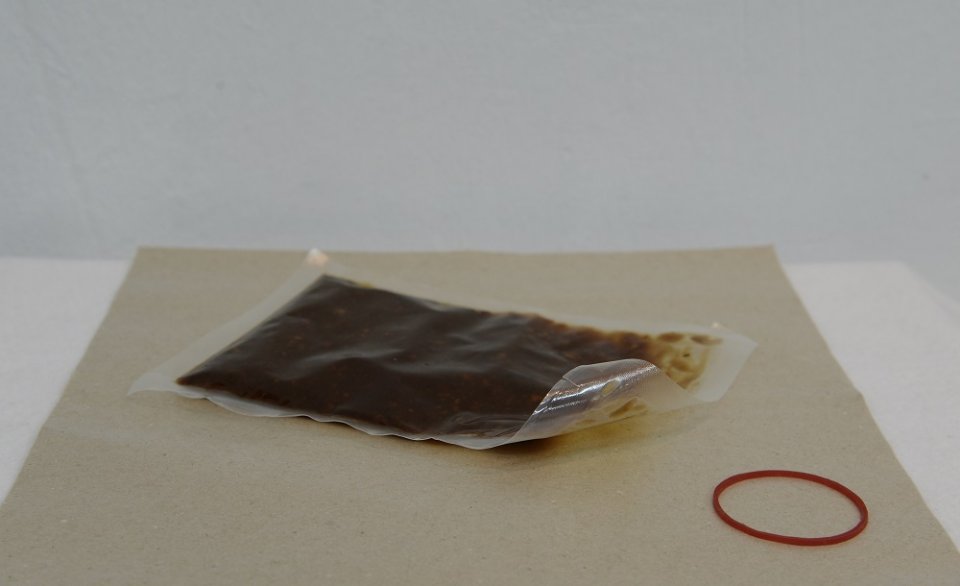
You think you’ve seen it all, until Tan whips out liquid carrot cake in a packet. Inspired by military MREs (Meal, Ready-to-Eat), the single-serving packets are easily reheated on the top of vehicles, in engine compartments or in hot water, said Tan. They’re for the on-the-go Singaporean, but also the ageing one who can no longer chew or swallow. Just tear a slit in the packet, and slurp.
The dish, easily made in large batches, is also his take on addressing the nation's constant desire for efficiency. Yet he hasn’t slacked on flavour. There’s a distinct wok hei to the porridge-like liquid, accented with fresh chye poh. “I made the carrot cake from scratch with radish; after I fried everything and it was nice-looking, with really good black sauce, I blended it all up into a mush,” he said.
Verdict: Seeing how there probably won’t be straws in the future, this “on-the-go” dish is going to be extremely messy to consume. Unpopular opinion—but we’d rather live a life without carrot cake.
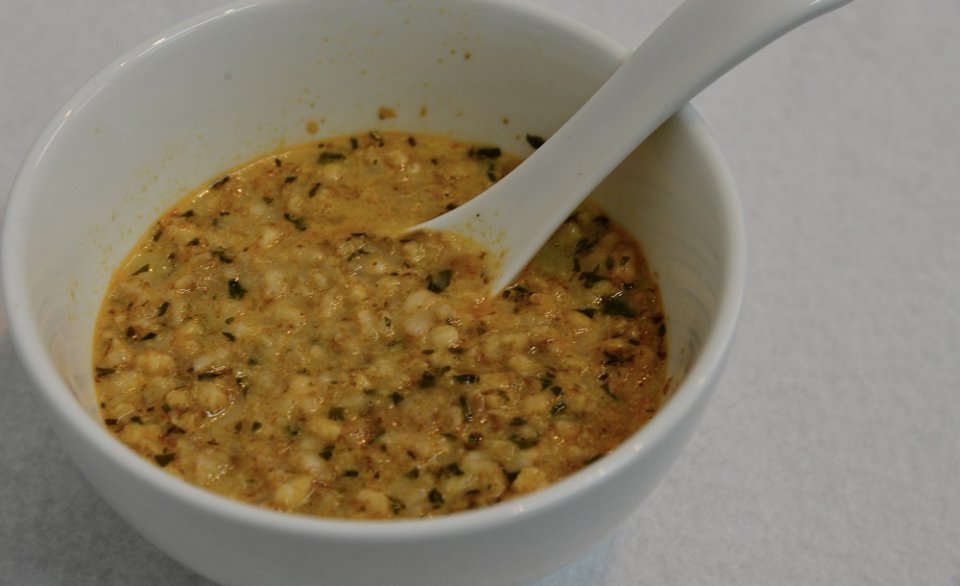
At this point, we’re relieved to have a bowl of solid food set down in front of us. Inside are chunks of cereal—the product of laksa rempah being dried out for more than 36 hours, then vacuum-packed to keep indefinitely. Pouring hot water into the bowl, Tan enthuses about the possibility of one day needing food that can survive in an underground bunker; just add water to rehydrate.
There’s an impressive layered spice that intensifies with you swirling the cereal bits in the hot water, releasing more coconut cream. As they dissolve into a more familiar broth-like texture, you can’t help but marvel at the overlooked versatility of dried foods—the unsung heroes living in a world of Asian wet pastes. More local dishes should come in cereal form.
Verdict: Can we get this made into an actual snack stocked at NTUC ASAP please?
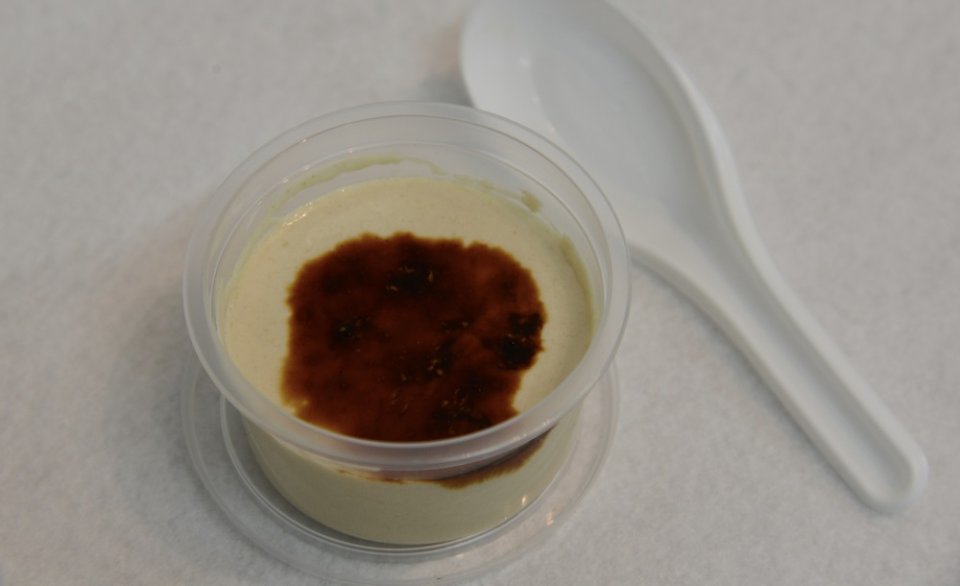
Even dystopian meals come with dessert. For your last course the humble tauhuey gets an upgrade—from an additive-filled product with zero nutritional value, to a grossly nutrient-packed one. Think sprouted brown rice, luscious Japanese milk, and whole soybeans dried and ground up. There’s enough fibre in a serving for one adult’s entire daily intake, plus Okinawa brown sugar on top for some welcome sweetening; Tan sets the rough value of this premium tauhuey at $14.
The actual beancurd has the consistency of custard—all traces of soft, slippery bounce gone, thanks in part to the elimination of gypsum, a calcium salt used to set the beancurd that can also cause plaque build-up in the arteries. Good to know, but it’s still a strange sensation.
“Today people are very concerned about whether there’s MSG (in their food), less salt, added sugar—without thinking about how it affects other things like the taste of the food,” said Ding.
Verdict: We can already feel the onset of overnutrition; superfood nerds, you did this to us all.
SAD: The Last Meal takes place Mar 29 & 30 at The Substation. Tickets and more information available here.
Advertisement